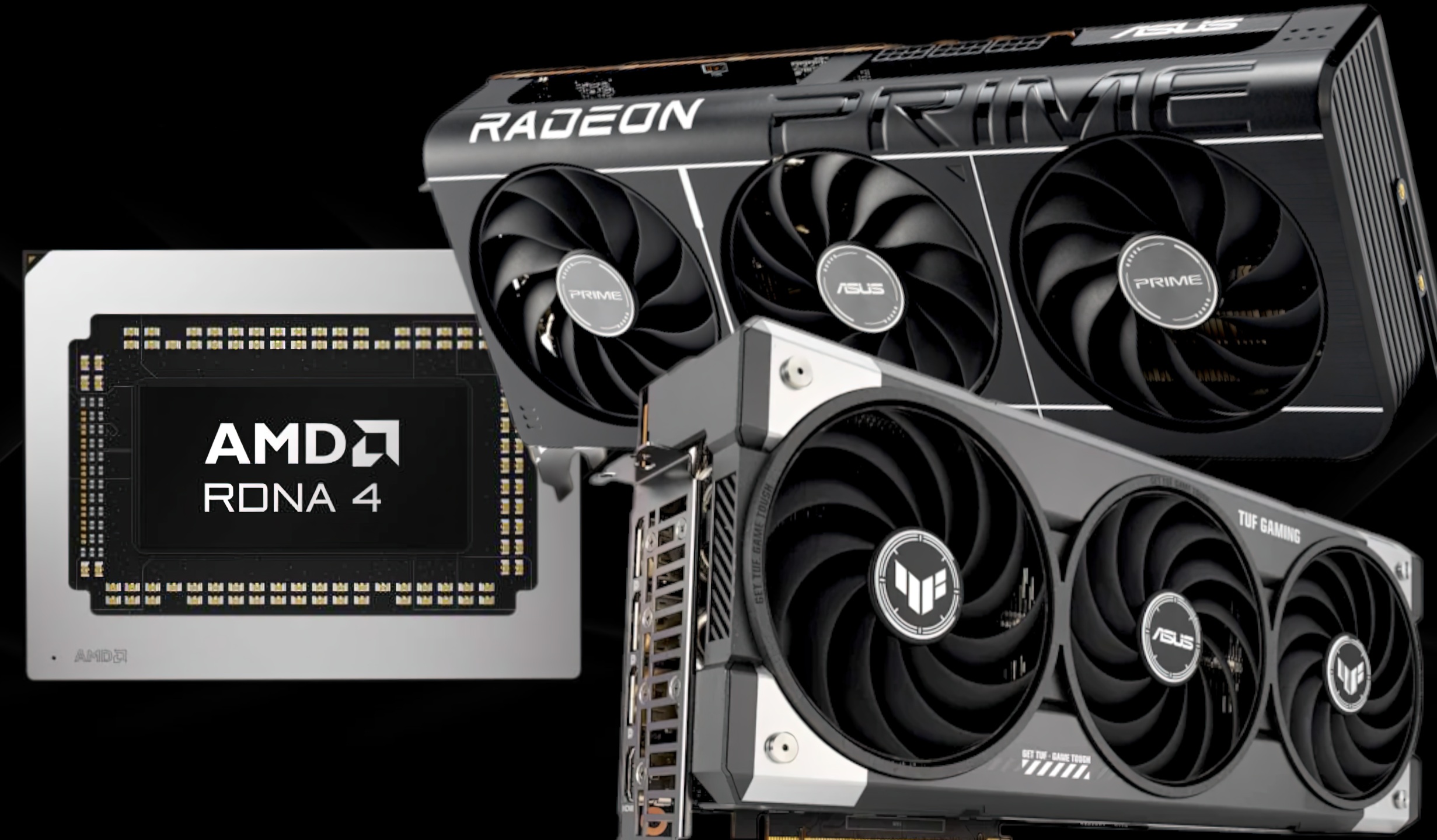
The battle for GPU dominance has intensified with AMD launching its highly anticipated Radeon RX 9070 XT, squarely aimed at NVIDIA’s ever-popular GeForce RTX 4070. If you’re building a powerful PC or upgrading your rig, the “AMD Radeon RX 9070 XT vs NVIDIA 4070” comparison is now more important than ever.
Let’s break down performance, architecture, pricing, and real-world use cases to help you choose the right graphics card.
Architecture & Design: RDNA 4 vs Ada Lovelace
| Feature | AMD Radeon RX 9070 XT | NVIDIA GeForce RTX 4070 |
|---|---|---|
| Architecture | RDNA 4 | Ada Lovelace |
| Process Node | 4nm | 5nm TSMC |
| Transistor Count | Estimated ~30B | ~35.8B |
| Memory Interface | 256-bit | 192-bit |
- AMD RX 9070 XT uses a 4nm RDNA 4-based architecture for better power efficiency and higher clock speeds.
- NVIDIA 4070, while still based on Ada Lovelace, focuses more on AI-assisted workloads and ray tracing via DLSS 3.
Verdict: AMD wins on memory interface and raw bandwidth, NVIDIA still leads on AI acceleration.
Gaming Performance (1080p / 1440p / 4K)
- 1080p Performance: Both cards crush 1080p, delivering over 150+ FPS in AAA titles on ultra settings.
- 1440p Performance: AMD RX 9070 XT edges ahead with raw raster performance, averaging ~10–15% better frame rates in traditional rendering scenarios.
- 4K Performance: The NVIDIA 4070 falls behind slightly without DLSS, but with DLSS 3 enabled, it delivers smoother gameplay in demanding titles.
Benchmark Snapshot (average FPS in 1440p):
| Game Title | RX 9070 XT | RTX 4070 |
|---|---|---|
| Cyberpunk 2077 | 95 | 88 |
| Hogwarts Legacy | 110 | 102 |
| Forza Horizon 5 | 140 | 138 |
| Call of Duty MW3 | 155 | 149 |
Verdict: AMD leads in raw performance, NVIDIA pulls closer with DLSS enabled.
Ray Tracing & AI Features
- NVIDIA 4070 shines with DLSS 3, Frame Generation, and highly mature ray tracing support.
- AMD RX 9070 XT features second-gen ray tracing cores and FSR 3, but performance dips in ray-traced games when compared to NVIDIA’s offerings.
Verdict: NVIDIA remains the king of ray tracing and AI-driven upscaling.
Power Consumption & Thermals
| Metric | RX 9070 XT | RTX 4070 |
|---|---|---|
| Typical Power Draw | ~270W | ~200W |
| Recommended PSU | 750W | 650W |
| Thermal Efficiency | Runs hotter | Runs cooler |
- RX 9070 XT demands higher power and has slightly higher thermal output.
- RTX 4070 is more power-efficient and better suited for compact builds.
Verdict: NVIDIA offers better thermals and efficiency.
Price & Value for Money
| Feature | RX 9070 XT | RTX 4070 |
|---|---|---|
| Launch Price (MSRP) | $599–$649 | $599 |
| Street Price | Varies by brand | Often discounted |
- Both GPUs are priced similarly at launch.
- The RX 9070 XT offers more VRAM (16GB vs. 12GB) and raw performance for the same price.
Verdict: AMD provides more hardware for the dollar; NVIDIA delivers smoother features and ecosystem support.
Summary – Which Should You Choose?
Choose the AMD Radeon RX 9070 XT if you:
- Prefer higher native performance in traditional rasterized games
- Need more VRAM for content creation or future-proofing
- Don’t rely heavily on ray tracing or DLSS features
Choose the NVIDIA RTX 4070 if you:
- Prioritize ray tracing and AI performance
- Want lower power consumption and quieter operation
- Use NVIDIA-specific tools like CUDA, DLSS, and RTX Remix
Final Verdict
The RX 9070 XT outperforms the RTX 4070 in most raw gaming workloads and offers greater long-term VRAM flexibility. However, NVIDIA’s RTX 4070 still holds its ground with ray tracing supremacy, DLSS 3, and energy efficiency.
In the end, it depends on your gaming habits, power setup, and whether you value raw horsepower or AI-driven smoothness.





